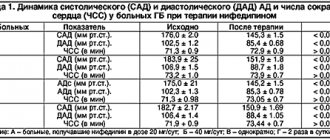Cavinton comfort 10 mg 90 pcs. dispersible tablets
pharmachologic effect
The mechanism of action of vinpocetine consists of several elements: it improves cerebral blood flow and metabolism, and has a beneficial effect on the rheological properties of blood.
The neuroprotective effect is realized by reducing the adverse cytotoxic effect of excitatory amino acids. Blocks Na+ and Ca2+ channels and NMDA and AMPA receptors. Vinpocetine stimulates metabolism in the brain: it increases the uptake and consumption of glucose and oxygen. Increases tolerance to hypoxia: increases the transport of glucose, the only source of energy for brain tissue, across the BBB; shifts glucose metabolism towards the energetically more favorable aerobic pathway. Selectively inhibits Ca2+-calmodulin-dependent cGMP phosphodiesterase. Increases the exchange of serotonin and norepinephrine in the brain, stimulates the noradrenergic neurotransmitter system and has an antioxidant effect.
Improves microcirculation in the brain by inhibiting platelet aggregation, reducing pathologically increased blood viscosity, increasing the deformability of erythrocytes and inhibiting the reuptake of adenosine; promotes the transition of oxygen into cells by reducing the affinity of red blood cells for it. Selectively increases cerebral blood flow by reducing cerebral vascular resistance without significantly affecting systemic circulatory parameters (blood pressure, cardiac output, heart rate, peripheral vascular resistance); does not cause the effect of “stealing”.
Composition and release form Cavinton comfort 10 mg 90 pcs. dispersible tablets
Tablets - 1 tablet:
- Active ingredients: vinpocetine - 10 mg;
- Excipients: mannitol - 75.6 mg, pregelatinized corn starch - 38 mg, butyl methacrylate copolymer - 9 mg, low-substituted hyprolose - 8 mg, crospovidone - 8 mg, magnesium stearate - 2.85 mg, sodium stearyl fumarate - 2.8 mg, colloidal silicon dioxide - 1.6 mg , aspartame - 1.28 mg, stearic acid - 1.26 mg, sodium lauryl sulfate - 0.9 mg, dimethicone - 0.39 mg, orange flavor - 0.32 mg.
90 pcs. - blisters, cardboard packs.
Description of the dosage form
Dispersible tablets are white or almost white, round, biconvex, with “N83” engraved on one side.
Directions for use and doses
The course of treatment and dose are determined by the attending physician.
The drug is prescribed orally, after meals. The daily dose of the drug is 30 mg (1 tablet 10 mg 3 times a day). The therapeutic effect develops approximately a week from the start of taking the drug.
Cavinton® Comforte dispersible tablets can be swallowed whole with a small amount of water; if swallowing is difficult, the tablet should be placed on the tongue for resorption. If the patient likes the orange taste of Cavinton® Comforte dispersible tablets, then they can be taken by sucking.
For kidney and liver diseases, the drug is prescribed in the usual dose.
Pharmacokinetics
Suction
Vinpocetine is rapidly absorbed after oral administration and reaches Cmax after 1 hour. Absorption occurs mainly in the proximal intestine. It is not metabolized when passing through the intestinal wall.
Distribution
In preclinical studies of oral administration of radioactively labeled vinpocetine, it was detected in the highest concentrations in the liver and gastrointestinal tract. Cmax in tissues is observed 2-4 hours after oral administration.
The amount of radioactive isotope in the brain did not exceed that in the blood. Protein binding in the human body is 66%. Vd is 246.7±88.5 l, indicating significant tissue binding. Bioavailability when taken orally - 7%.
With repeated oral administration in doses of 5 mg and 10 mg, the kinetics are linear; while Css in blood plasma was 1.2±0.27 ng/ml and 2.1±0.33 ng/ml, respectively.
Metabolism and excretion
Clearance is 66.7%, which exceeds the total plasma volume of the liver (50 l/h) and indicates extrahepatic metabolism. T1/2 in humans is 4.83 ± 1.29 hours. In studies with a radioactively labeled drug, it was found that the main routes of elimination are excretion by the kidneys and through the intestines in a ratio of 3:2. In preclinical studies, the greatest radioactivity was detected in bile, but no evidence of significant enterohepatic circulation was found. Apovinamic acid is excreted by the kidneys by simple glomerular filtration, T1/2 depends on the dose taken and the route of administration of vinpocetine. The main metabolite of vinpocetine is apovincamic acid (AVA), the proportion of which in humans is 25-30%. After taking vinpocetine orally, the AUC of VKA is 2 times greater than that after intravenous administration. This indicates that VKA is formed during the first pass metabolism of vinpocetine. Other known metabolites are hydroxyvinpocetine, hydroxy-AVA, dihydroxy-AVA-glycinate, and their conjugates with glucuronides and/or sulfates. Vinpocetine is excreted unchanged in small quantities.
An important and useful characteristic of vinpocetine is the absence of the need for dose adjustment in diseases of the liver and kidneys due to the lack of cumulation due to the peculiarities of its metabolism.
Pharmacokinetics in special groups of patients
It was revealed that the pharmacokinetics of vinpocetine in elderly patients does not differ significantly from that in young patients; there is no accumulation of the drug. Therefore, vinpocetine can be prescribed to patients with impaired liver and kidney function for a long time and in normal doses.
Indications for use Cavinton comfort 10 mg 90 pcs. dispersible tablets
Neurology:
- symptomatic treatment of the consequences of ischemic stroke, vascular vertebrobasilar insufficiency, vascular dementia, cerebral atherosclerosis, post-traumatic, hypertensive encephalopathy.
Ophthalmology:
- chronic vascular diseases of the retina and choroid.
Otology:
- perceptual hearing loss;
- Meniere's disease;
- noise in ears.
Contraindications
- hypersensitivity to vinpocetine and other components of the drug;
- acute phase of hemorrhagic stroke;
- severe form of ischemic heart disease;
- severe arrhythmias;
- phenylketonuria;
- pregnancy;
- lactation period (breastfeeding);
- children and adolescents up to 18 years of age (due to insufficient data).
Application of Cavinton comfort 10 mg 90 pcs. dispersible tablets during pregnancy and breastfeeding
Vinpocetine crosses the placental barrier and is therefore contraindicated during pregnancy. Moreover, its concentration in the placenta and in the blood of the fetus is lower than in the blood of a pregnant woman. At high doses, placental bleeding and spontaneous abortions are possible, probably as a result of increased placental blood supply.
Within an hour, 0.25% of the administered dose of the drug passes into breast milk. When using the drug, you must stop breastfeeding.
Contraindicated in children and adolescents under 18 years of age (due to insufficient data).
special instructions
The presence of long QT interval syndrome and the use of drugs that cause prolongation of the QT interval require periodic ECG monitoring.
Cavinton® Comforte 10 mg dispersible tablet contains 1.28 mg of aspartame, a source of phenylalanine, therefore the drug is contraindicated in patients with phenylketonuria.
Impact on the ability to drive vehicles and machinery
No studies have been conducted on the effect on the ability to drive vehicles. If undesirable reactions from the nervous system occur, care should be taken when driving vehicles and working with machinery.
Overdose
Currently, data on overdose with vinpocetine are limited.
Treatment: gastric lavage, taking activated carbon, symptomatic treatment.
Side effects Cavinton comfort 10 mg 90 pcs. dispersible tablets
Side effects are quite rare. Data are presented by system organ class according to the MedDRA classification and with the following frequency: uncommon (from ≥1/1000 to
From the blood and lymphatic system: rarely - leukopenia, thrombocytopenia; very rarely - anemia, red blood cell agglutination.
From the immune system: very rarely - hypersensitivity.
From the side of metabolism and nutrition: infrequently - hypercholesterolemia; rarely - loss of appetite, anorexia, diabetes mellitus.
Mental disorders: rarely - insomnia, sleep disturbances, agitation, restlessness; very rarely - euphoria, depression.
From the nervous system: infrequently - headache; rarely - dizziness, taste disturbances, stupor, hemiparesis, drowsiness, amnesia; very rarely - tremors, spasms.
From the side of the organ of vision: rarely - swelling of the optic nerve head; very rarely - conjunctival hyperemia.
From the organ of hearing and labyrinth: infrequently - vertigo; rarely - hyperacusis, hypoacusia, tinnitus.
From the heart: rarely - myocardial ischemia/infarction, angina pectoris, bradycardia, tachycardia, extrasystoles, palpitations; very rarely - arrhythmia, atrial fibrillation.
From the side of blood vessels: infrequently - arterial hypotension; rarely - arterial hypertension, hot flashes, thrombophlebitis; very rarely - fluctuations in blood pressure.
From the gastrointestinal tract: infrequently - abdominal discomfort, dry mouth, nausea; rarely - abdominal pain, constipation, diarrhea, dyspepsia, vomiting; very rarely - dysphagia, stomatitis.
From the skin and subcutaneous tissues: rarely - erythema, increased sweating, itching, urticaria, rash; very rarely - dermatitis.
General disorders and disorders at the injection site: rarely - asthenia, fatigue, feeling of heat; very rarely - chest discomfort, hypothermia.
Impact on the results of laboratory and instrumental studies: infrequently - decrease in blood pressure, rarely - increase in blood pressure, increase in the concentration of triglycerides in the blood serum, depression of the ST segment on the ECG, decrease/increase in the number of eosinophils, changes in the activity of liver enzymes; very rarely - increase/decrease in the number of leukocytes, decrease in the number of red blood cells, reduction in thrombin time, increase in body weight.
Drug interactions
Interaction is not observed when used simultaneously with beta-blockers (chloranolol, pindolol), clopamide, glibenclamide, digoxin, acenocoumarol, hydrochlorothiazide and imipramine.
The simultaneous use of vinpocetine and methyldopa sometimes caused a slight increase in the hypotensive effect, so this treatment requires regular monitoring of blood pressure.
Despite the lack of data confirming the possibility of interaction, it is recommended to exercise caution when prescribing Cavinton® Comforte with drugs of central, antiarrhythmic and anticoagulant action.


